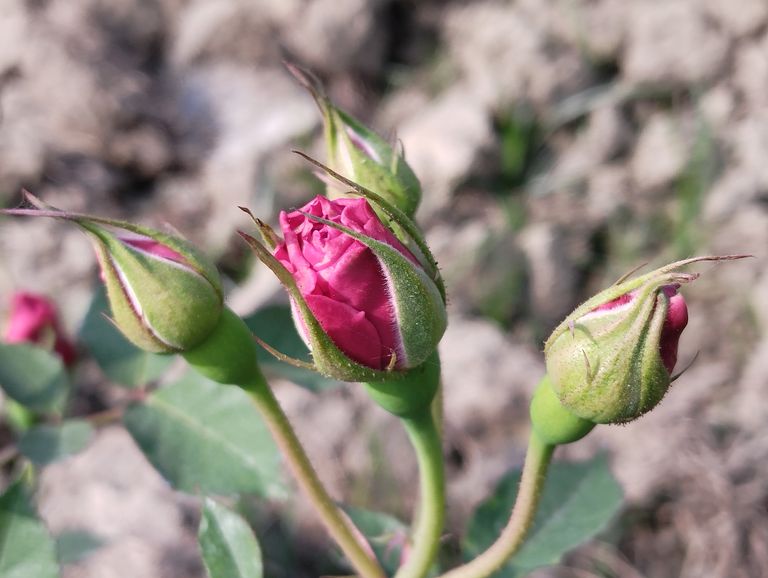
Creating a Rose Garden A Comprehensive Guide.
A rose garden can transform any space into a beautiful, fragrant sanctuary. Roses, often called the "queen of flowers," are loved for their vibrant colors, enchanting fragrance, and timeless elegance. If you’re planning to create a rose garden, this detailed guide will help you achieve a thriving and aesthetically pleasing space.
Choosing the Right Location
Roses thrive in environments with plenty of sunlight. When selecting a location for your rose garden:
Sunlight: Ensure the garden receives at least 6-8 hours of direct sunlight daily. Morning sunlight is especially beneficial.
Soil Type: Roses prefer well-draining soil rich in organic matter. Loamy soil with a pH level between 6.0 and 6.5 is ideal.
Air Circulation: Good air circulation prevents fungal diseases like black spot and powdery mildew. Avoid planting roses too close to walls or other plants.
Selecting Rose Varieties
There are numerous types of roses, each with unique characteristics. Choose varieties that suit your climate, preferences, and garden space:
Hybrid Tea Roses: Known for their large blooms and long stems, perfect for cutting.
Floribunda Roses: Produce clusters of flowers and bloom continuously.
Climbing Roses: Ideal for trellises, arches, or walls.
Shrub Roses: Hardy and low-maintenance, suitable for informal gardens.
Miniature Roses: Compact and great for small spaces or containers.
Preparing the Soil
Healthy soil is crucial for growing vibrant roses. Follow these steps to prepare your soil:
Testing: Test the soil’s pH and nutrient levels. Amend the soil as necessary.
Organic Matter: Add compost, aged manure, or peat moss to enrich the soil.
Drainage: Ensure the soil drains well to prevent root rot. If the area retains water, consider raised beds.
Planting Roses
The planting process can determine the success of your rose garden:
When to Plant: Spring or fall are the best seasons for planting roses.
Spacing: Space rose plants 18-36 inches apart, depending on the variety.
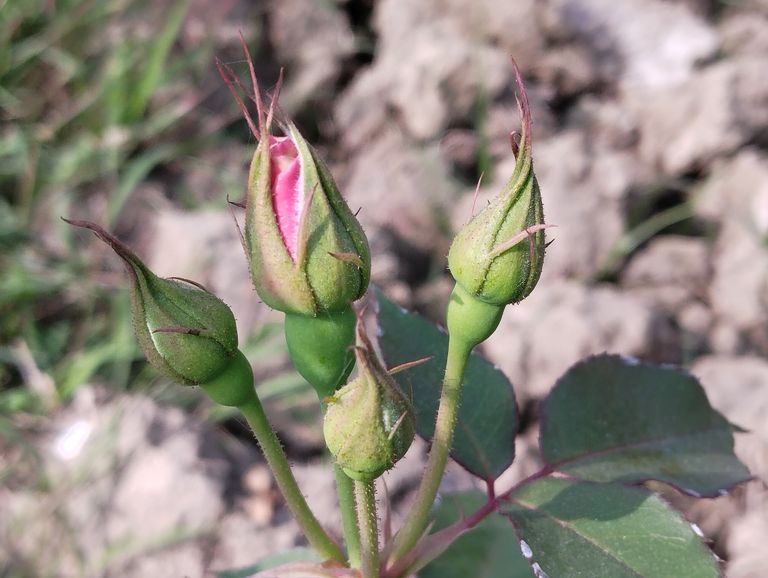
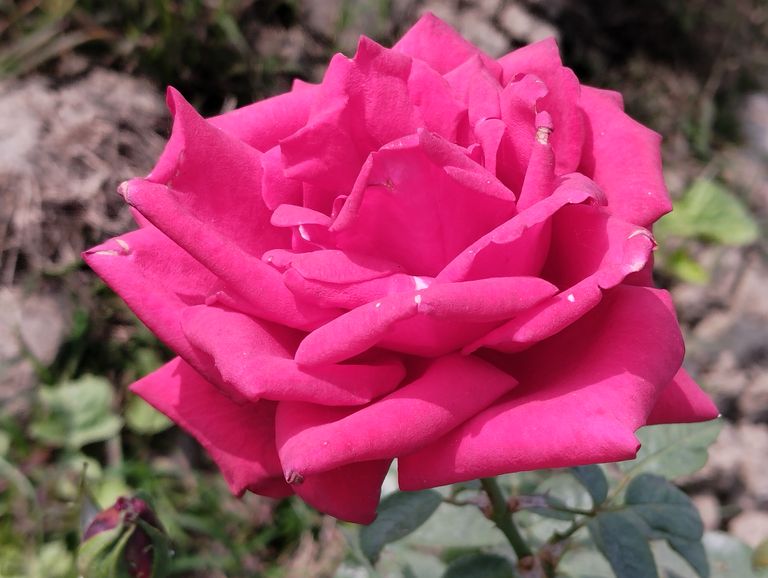
Planting Depth: Dig a hole twice as wide and as deep as the plant’s root ball. Position the rose so that the bud union (the swollen part where the stems meet the roots) is just above the soil surface in warm climates and slightly below in colder areas.
Watering: Water the plant thoroughly after planting to settle the soil around the roots.
Caring for Your Rose Garden
Regular maintenance ensures your roses bloom beautifully year after year.
Watering: Roses need deep, consistent watering. Water the base of the plant to avoid wetting the leaves, which can lead to disease.
Mulching: Apply a 2-3 inch layer of mulch to retain moisture, regulate soil temperature, and suppress weeds.
Fertilizing: Feed roses with a balanced fertilizer rich in nitrogen, phosphorus, and potassium. Fertilize during the growing season but stop a month before frost.
Pruning: Prune in late winter or early spring to remove dead or diseased wood and shape the plant. Use sharp, clean tools to make clean cuts.
Managing Pests and Diseases
Common rose pests include aphids, spider mites, and Japanese beetles. Use insecticidal soap or neem oil for infestations. Fungal diseases like black spot and rust can be managed with proper air circulation and fungicides. Regularly inspect your plants to catch issues early.
Designing Your Rose Garden
A well-designed rose garden enhances its beauty:
Arrangement: Group roses with similar heights together. Use climbing roses for vertical elements and shrub roses for borders.
Companion Plants: Add lavender, marigolds, or catmint to repel pests and complement the roses.
Pathways: Create pathways for easy access and to add structure to the garden.
Enjoying Your Rose Garden
Once your rose garden is established, it’s time to enjoy the fruits of your labor:
Cut blooms for floral arrangements.
Spend time in the garden, soaking in the beauty and fragrance.
Host garden parties or enjoy quiet moments of reflection in your rose sanctuary.
Creating a rose garden is a rewarding endeavor that brings beauty and joy to any space. With proper planning, planting, and care, your garden will bloom with vibrant, fragrant roses year after year. Take the time to nurture your roses, and they will reward you with their timeless charm.
Different Varieties of Rose Flowers: A Comprehensive Guide
Roses are among the most cherished flowers in the world, celebrated for their beauty, fragrance, and symbolism. They come in various colors, shapes, and sizes, making them a favorite for gardens, bouquets, and special occasions. Below, we explore the most popular varieties of rose flowers, highlighting their unique characteristics.
Hybrid Tea Roses
Hybrid Tea Roses are classic and elegant, known for their large, single blooms on long stems. They are ideal for cut flowers and have a delightful fragrance. These roses are often used in floral arrangements and come in a variety of colors, including red, pink, white, and yellow.
Popular Varieties: ‘Peace,’ ‘Mr. Lincoln,’ and ‘Double Delight.’
Floribunda Roses
Floribunda Roses are a cross between Hybrid Tea and Polyantha roses. They bloom in clusters, offering a burst of color in gardens. Floribundas are hardy and bloom continuously throughout the season.
Popular Varieties: ‘Iceberg,’ ‘Julia Child,’ and ‘Angel Face.’
Grandiflora Roses
Grandiflora Roses are a blend of Hybrid Tea and Floribunda roses. They produce large flowers, often in clusters, on tall plants. These roses are perfect for adding height and drama to your garden.
Popular Varieties: ‘Queen Elizabeth,’ ‘Gold Medal,’ and ‘Crimson Bouquet.’
Climbing Roses
Climbing Roses are perfect for covering trellises, fences, and walls. They produce long canes and can be trained to grow in various shapes. Climbing roses bloom abundantly, offering a spectacular display.
Popular Varieties: ‘New Dawn,’ ‘Don Juan,’ and ‘Cecile Brunner.’
Shrub Roses
Shrub Roses are low-maintenance and robust, making them ideal for landscapes. They come in various sizes and bloom profusely. Many shrub roses are disease-resistant and easy to grow.
Popular Varieties: ‘Knock Out,’ ‘David Austin English Roses,’ and ‘Rugosa.’
Miniature Roses
Miniature Roses are small in size but full of charm. They are perfect for containers, small gardens, and indoor spaces. Despite their size, they are hardy and bloom prolifically.
Popular Varieties: ‘Baby Boomer,’ ‘Miniature Red,’ and ‘Cinderella.’
Groundcover Roses
Groundcover Roses are spreading varieties that create a carpet of flowers. They are excellent for covering slopes, borders, and large areas. These roses are hardy, low-maintenance, and bloom continuously.
Popular Varieties: ‘Flower Carpet,’ ‘Red Drift,’ and ‘White Meidiland.’
Old Garden Roses
Old Garden Roses, also known as heirloom or antique roses, are varieties that existed before 1867. They are valued for their strong fragrance, unique forms, and historical significance.
Popular Varieties: ‘Damask,’ ‘Gallica,’ and ‘Alba.’
Wild Roses
Wild Roses, or species roses, are the original, natural varieties of roses. They are typically single-petaled and grow in the wild. These roses are hardy and provide a natural look to gardens.
Popular Varieties: Rosa rugosa, Rosa canina (Dog Rose), and Rosa arkansana.
Polyantha Roses
Polyantha Roses are compact bushes with clusters of small blooms. They are perfect for borders and mass plantings, providing a continuous display of flowers throughout the season.
Popular Varieties: ‘The Fairy,’ ‘Margo Koster,’ and ‘China Doll.’
Care Tips for Growing Roses
To grow healthy and vibrant roses, follow these basic care tips:
Soil: Ensure well-draining, fertile soil with a pH of 6.5.
Sunlight: Provide at least 6 hours of direct sunlight daily.
Watering: Water deeply once or twice a week, depending on the weather.
Fertilizing: Use a balanced fertilizer during the growing season.
Pruning: Prune regularly to remove deadwood and encourage new growth.
Pest and Disease Control: Monitor for pests like aphids and diseases like black spot, treating them promptly.
Roses are versatile and captivating flowers that can enhance any space. With so many varieties available, gardeners can choose roses that suit their preferences and climate. Whether you opt for the timeless elegance of Hybrid Teas or the robustness of Shrub Roses, these flowers will undoubtedly add beauty and charm to your garden.
Pruning Rose Flowers: A Comprehensive Guide
Pruning is an essential gardening practice for maintaining the health, shape, and productivity of rose plants. Whether you're a seasoned gardener or a novice, understanding the nuances of pruning roses can enhance their growth and beauty. This blog provides a detailed guide on how to prune roses effectively, ensuring vibrant blooms and healthy plants.
What is Pruning?
Pruning involves the selective removal of certain parts of a plant, such as branches, stems, or flowers. For roses, it helps to:
Remove dead or diseased wood.
Encourage new growth and blooming.
Maintain an aesthetically pleasing shape.
Improve air circulation and sunlight penetration.
When to Prune Roses
The timing of pruning depends on the type of rose and the climate. Generally:
Spring Pruning: Ideal for most roses, as it encourages new growth and prevents frost damage.
Summer Pruning: Deadheading spent blooms keeps the plant tidy and may encourage a second bloom cycle.
Winter Pruning: In regions with mild winters, light pruning can be done to maintain shape.
Tools Needed for Pruning
Having the right tools ensures precision and minimizes damage to the plant. Essential tools include:
Sharp Pruners: To make clean cuts.
Loppers: For thicker stems.
Gloves: Protect your hands from thorns.
Disinfectant: To sterilize tools and prevent disease spread.
Step-by-Step Guide to Pruning Roses
Assess the Plant
Before pruning, inspect the rose bush to identify:
Deadwood (brown, dry stems).
Diseased or damaged branches.
Overcrowded growth.
Remove Dead or Diseased Wood
Start by cutting away all dead, dry, or diseased stems. This promotes healthier growth and prevents the spread of infections.
Trim Crossing or Overcrowded Branches
Branches that rub against each other can cause wounds, inviting pests and diseases. Remove these to improve air circulation.
Cut Back to Healthy Buds
Locate a healthy, outward-facing bud (a small bump on the stem) and cut at a 45-degree angle about 1/4 inch above it. This encourages growth away from the center of the plant.
Shape the Plant
Aim for an open, vase-like shape to allow light and air to penetrate. This helps reduce fungal issues and promotes balanced growth.
Remove Suckers
Suckers are vigorous shoots that grow from below the graft union or rootstock. Remove them to redirect the plant’s energy to the main stems.
Tips for Effective Pruning
Prune on a dry, sunny day to reduce the risk of disease.
Disinfect your tools before and after pruning each plant.
Use sharp tools to make clean cuts, as jagged cuts can invite diseases.
Wear long sleeves and gloves to protect yourself from thorns.
Common Mistakes to Avoid
Over-pruning: Cutting too much can weaken the plant.
Under-pruning: Leaving too many weak stems can reduce blooms.
Cutting too close to a bud: This can damage the bud and hinder growth.
Pruning in wet conditions: Increases the risk of fungal infections.
Types of Roses and Pruning Techniques
Hybrid Tea Roses
Prune hard in early spring to remove weak stems and encourage large blooms.
Floribunda Roses
Trim lightly to maintain their bushy form while encouraging blooms.
Climbing Roses
Prune after flowering to remove old canes and promote new growth.
Shrub Roses
Prune lightly to maintain their natural shape.
Miniature Roses
Minimal pruning is required, focusing on removing deadwood.
Aftercare for Pruned Roses
Apply a balanced fertilizer to support new growth.
Mulch around the base to retain moisture and suppress weeds.
Water deeply but avoid overwatering.
Monitor for pests and diseases, especially during the growing season.
Benefits of Pruning Roses
Regular pruning leads to:
More vibrant and abundant blooms.
Stronger and healthier plants.
Aesthetic appeal in the garden.
Reduced risk of pests and disease.
Pruning roses might seem daunting at first, but with practice, it becomes a rewarding task. By following the steps outlined above, you can ensure your roses thrive and bloom beautifully year after year. Happy gardening.
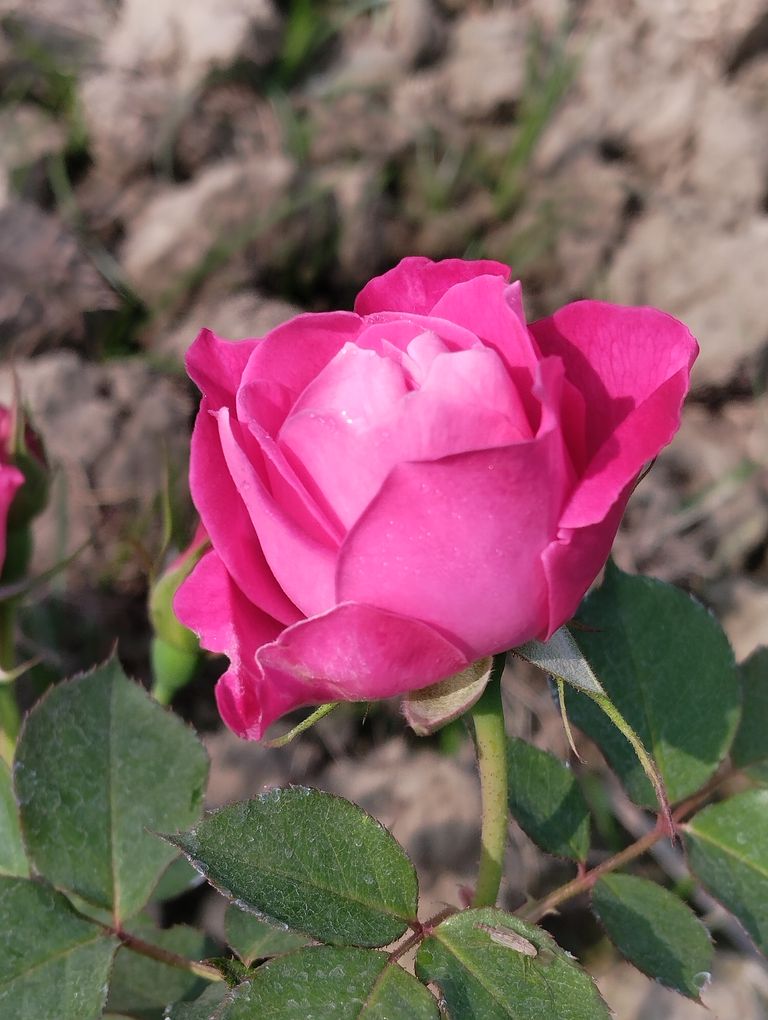
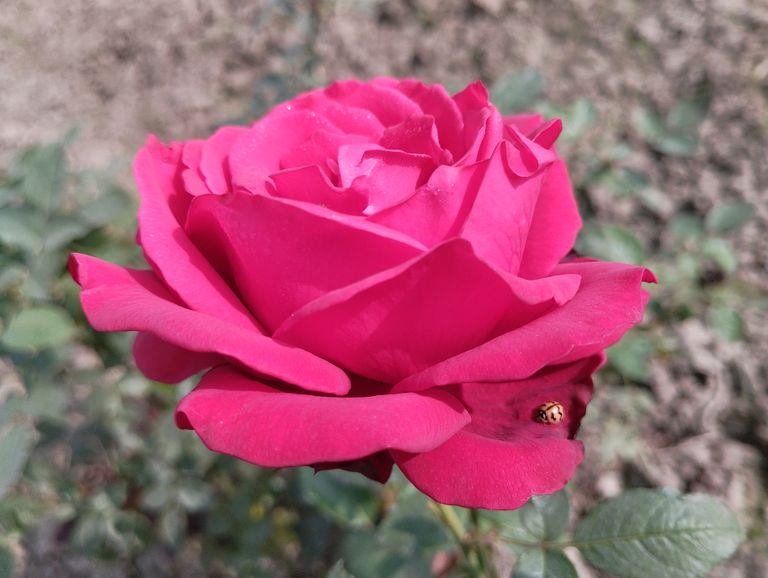
How to Plant Rose Saplings: A Step-by-Step Guide
Roses are one of the most beloved flowers in the world, symbolizing love, beauty, and elegance. Growing your own rose plants can be a rewarding experience, adding charm to your garden. This guide will walk you through the process of planting rose saplings, ensuring they thrive and bloom beautifully.
Step 1: Choosing the Right Rose Variety
Before planting, decide which type of rose you want. Roses come in various types such as hybrid teas, floribundas, climbers, and shrub roses. Choose a variety suitable for your climate and garden space. If you're unsure, consult your local nursery for guidance.
Step 2: Selecting the Perfect Location
Roses thrive in locations that provide:
Sunlight: Roses need at least 6–8 hours of direct sunlight daily.
Good Drainage: Avoid areas where water tends to pool.
Air Circulation: Choose a spot with good air circulation to prevent fungal diseases.
Step 3: Preparing the Soil
Healthy soil is crucial for rose growth.
pH Level: Roses prefer slightly acidic soil with a pH between 6.0 and 6.5. Test the soil and adjust with lime (to increase pH) or sulfur (to lower pH) as needed.
Nutrients: Enrich the soil with organic compost, well-rotted manure, or a balanced fertilizer.
Tilling: Loosen the soil to a depth of 12–15 inches to ensure the roots penetrate easily.
Step 4: Planting the Rose Sapling
Follow these steps to plant your rose sapling:
Dig a Hole:
The hole should be about 18–24 inches wide and 12–15 inches deep, depending on the size of the sapling.
Prepare the Sapling:
Remove the sapling from its pot carefully.
If the roots are wrapped in burlap, keep it intact.
Trim any damaged roots or stems.
Planting:
Place the sapling in the center of the hole.
For grafted roses, position the graft union (swollen area) about 1–2 inches above the soil level.
Backfill the hole with soil, gently pressing it down to remove air pockets.
Watering:
Water the sapling immediately after planting to settle the soil around the roots.
Step 5: Mulching and Watering
Mulching:
Apply a 2–3 inch layer of organic mulch (like wood chips or straw) around the base of the plant. This helps retain moisture, regulate soil temperature, and prevent weeds.
Watering:
Roses require consistent watering, especially during the growing season. Water deeply 2–3 times a week, ensuring the soil stays moist but not waterlogged.
Step 6: Pruning and Maintenance
Pruning:
Regular pruning encourages healthy growth and abundant blooms.
Remove dead or diseased wood and trim stems to shape the plant.
Fertilizing:
Feed the roses with a balanced fertilizer during the growing season. Avoid over-fertilizing, as it may lead to excessive foliage and fewer flowers.
Step 7: Protecting Roses
Pests:
Watch out for common pests like aphids, spider mites, and caterpillars. Use insecticidal soap or neem oil if necessary.
Diseases:
Prevent fungal diseases like black spot and powdery mildew by keeping the foliage dry and ensuring proper air circulation.
Step 8: Patience and Care
Roses may take a few weeks or months to establish and bloom. Be patient, provide consistent care, and enjoy the journey of nurturing these beautiful flowers.
Planting rose saplings is a delightful way to bring nature’s beauty to your home. By following these steps, you’ll create a thriving rose garden that will reward you with stunning blooms year after year. Happy gardening.
The Beauty of Roses: Nature’s Timeless Masterpiece
Among the countless wonders of nature, roses stand as an emblem of elegance, love, and beauty. Revered across cultures and eras, this extraordinary flower has etched its significance in art, literature, and daily life. Let us embark on a journey to explore the timeless beauty of roses, uncovering their symbolism, varieties, and why they remain a universal favorite.
A Symbol of Emotion and Elegance
Roses are not just flowers; they are carriers of emotions. With their velvety petals, captivating fragrance, and vibrant colors, roses have been immortalized as a symbol of love, passion, and purity. Across generations, they’ve been gifted to express affection, joy, or even sorrow. From Shakespeare’s sonnets to romantic ballads, roses have inspired poets and artists alike.
Each color of the rose holds a special meaning:
Red Roses: The eternal symbol of love and passion.
White Roses: Represent purity, innocence, and peace.
Yellow Roses: A sign of friendship and joy.
Pink Roses: Reflect gratitude, admiration, and elegance.
Orange Roses: Embody energy and enthusiasm.
This symbolic diversity allows roses to transcend linguistic barriers, making them a universal token of expression.
Varieties That Mesmerize
The world of roses is as diverse as it is beautiful. With over 300 species and thousands of cultivars, roses cater to every aesthetic and preference. Some popular varieties include:
Hybrid Teas: Known for their long stems and large blooms, they are perfect for bouquets.
Floribundas: These bloom in clusters, offering a vibrant and lively display.
Climbing Roses: Ideal for trellises and walls, they create a stunning vertical garden.
Miniature Roses: Compact and delicate, perfect for small spaces and indoor gardens.
Wild Roses: The original, untamed beauty of nature, often found in natural landscapes.
The myriad shapes, sizes, and colors ensure that there’s a rose for every occasion and environment.
The Allure of Their Fragrance
One of the most enchanting features of roses is their fragrance. From the sweet, delicate aroma of a tea rose to the rich, heady scent of damask roses, the variety of fragrances is truly mesmerizing. This aromatic appeal has led to roses being a staple in perfumes, oils, and skincare products for centuries.
Roses in Cultivation and Gardening
Roses are a gardener’s delight. While they may seem sophisticated, they are surprisingly resilient and versatile. With proper care, roses can thrive in a variety of climates. Their adaptability makes them a popular choice for gardens, balconies, and landscapes.